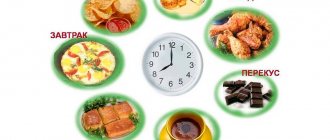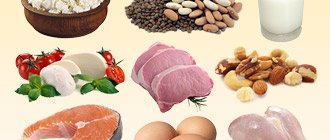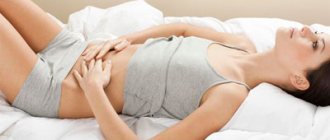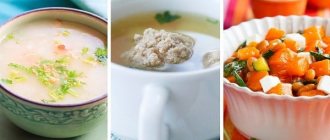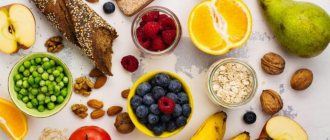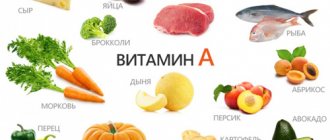The Pevzner diet 1 table is used to reduce the functional load on the digestive organs, as well as improve the condition of the stomach and duodenum. It is prescribed in a medical hospital, as well as after the patient is discharged home against the background of a decrease in the severity of manifestations of the pathological process. The diet can be used in isolation or included in recommendations after other tables.
Main characteristics of the diet
Diet 1 is characterized by a gentle diet with a decrease in the functional load on the organs of the digestive system, primarily the stomach and duodenum. It includes several main distinctive characteristics:
- Limiting the consumption of foods that have a stimulating effect on the mucous membrane and glands of the stomach.
- A sufficient supply of compounds necessary for the body, which include easily digestible proteins, carbohydrates, mainly vegetable fats, as well as vitamins and minerals.
- A harmonious ratio of basic food ingredients, which is primarily aimed at preventing the development of deficiency of certain compounds, in particular vitamins.
- Sufficient energy value of food.
In terms of the quantity and ratio of main organic compounds, diet 1 includes:
- Carbohydrates – 400-500 g, mainly of plant origin, include fiber.
- Proteins – 100 g, of which 60% should be animal proteins, and 40% should be plant-based compounds.
- Fats – 100 g, of which 70-80% lipids should be of animal origin.
- The total daily volume of liquid is 1.2-1.5 liters.
- Table salt (sodium chloride) – 12 g.
The total daily energy value of diet 1 food varies between 2900-3100 kcal, the mass of all ingredients is 2.5-3 kg. It is recommended to eat food 5 times a day in small portions, thereby reducing the functional load on all organs of the digestive system.
General rules
First of all, let's find out what a therapeutic diet is.
Therapeutic nutrition, in medical terminology “medicinal table”, is prescribed for diseases and is an integral, and in some cases the main, component of treatment. Table No. 1, the Pevzner diet is prescribed for stomach diseases: acute and chronic gastritis, peptic ulcer. Table 1 is also prescribed for gastroduodenitis. Since this is a moderately gentle diet, it is indicated in the stage of recovery or mild exacerbation of the above diseases. It provides chemical, mechanical, as well as thermal sparing of the gastrointestinal tract with physiologically complete nutrition, since the daily diet contains 90-100 g of proteins, 100 g of fats and 420 g of carbohydrates. Calorie content - 2900-3000 kcal per day.
The main points of this diet are:
- Limiting secretion pathogens (broths) and irritants of the mucous membrane, which are spicy dishes and seasonings, raw vegetables.
- Elimination of difficult-to-digest foods and foods that linger in the stomach for a long time.
- The food is cooked and pureed. Baking without a pronounced crust is allowed. When the patient's condition improves, they switch to food without pureeing. In this regard, there are options - a wiped table and not a wiped one. If we are talking about fish and rough meats, then they can be served in pieces.
- Excessively cold and hot dishes are excluded. Cold food suppresses acid-forming functions, but slows down regenerative processes. Too hot also has an adverse effect on the mucous membrane.
- Salt is moderately limited.
- Meals are provided 5-6 times a day, including drinking milk or cream before bed.
Diet No. 1 for gastritis
In acute and exacerbation of chronic gastritis, it helps reduce inflammation and this is achieved by taking pureed and easily digestible food at the same time. After all, a violation of the diet and consumption of food that irritates the gastric mucosa is the cause of the disease, along with alcohol consumption, smoking and nervous tension. It follows that proper nutrition is important in the treatment of chronic gastritis and sequential administration of Diet 1A (up to 7 days), then 1B (up to two weeks) and No. 1 will achieve long-term remission. You can wipe dishes only for the first few days, and then it is enough to choose not rough varieties of meat (chicken, veal) and chew the food thoroughly.
Diet No. 1 (Table No. 1) for gastritis is followed for up to 2-3 months, and then it is recommended to switch to a common table, but with limitation, and sometimes with the exception of overly spicy dishes, seasonings and sauces. For gastritis with high acidity, it is recommended to limit easily digestible carbohydrates (jam, honey, sweets, sugar and other sweets), which reduces the excitability of the stomach and its secretory activity.
Diet number 1 for stomach ulcers
Creates all the conditions for the healing of ulcers, since it does not contain rough food and products that irritate the mucous membrane and stimulate gastric secretion. A sufficient amount of protein has a beneficial effect on reparative processes. Reducing the volume of food taken and split meals leads to mechanical sparing.
Peptic ulcer (stomach ulcer) and duodenal ulcer is a more severe disease and requires long-term drug treatment and dietary nutrition. In case of exacerbation, treatment begins with treatment Table 1A (more gentle, for two weeks). Then for two weeks the patient is recommended Table 1B (mushy and pureed food), and after that - minimally gentle No. 1 (all pureed), which is prescribed for up to six months.
The absence in food during this period of strong irritants that stimulate not only secretory activity, but also the nervous system (ear, meat, mushroom broth, strong tea, coffee, hot, spicy, fried foods, smoked foods, carbonated drinks, horseradish, marinades, mustard, alcohol) creates favorable conditions for successful treatment. Limiting table salt is also necessary, since salt stimulates acid formation in the stomach. Weak juice dishes include: milk, soft-boiled eggs, white crackers, cereals, sweet fruit juices, which must be present in the patient’s diet.
At the same time, the diet should have a high nutritional value (not to be confused with high calorie content), which is determined by the balance of the main food components, vitamins (A, C, group B) and mineral salts. Proteins stimulate the healing of ulcerative defects and bind hydrochloric acid in the stomach, which protects the mucous membrane. Fats suppress gastric secretion. In this case, preference is given to vegetable oils. They normalize impaired metabolic processes and promote ulcer repair. Milk is a valuable food product in this regard.
Usually, if patients feel well, their time on this diet is reduced and after 2-3 months. Allow the consumption of unprocessed food with the addition of raw vegetables and fruits. These include sweet plums, peaches, nectarines, apples, and vegetables - tomatoes. Switching to a common table involves regular meals and careful consumption of hot, spicy, too hot foods and alcohol. When carrying out anti-relapse treatment prescribed by a doctor, you should adhere to a gentle diet for 2-4 weeks (first Table No. 1B, and then No. 1).
Mechanism of therapeutic action
Diet 1 has a therapeutic effect on the pathology of the upper gastrointestinal tract, namely the stomach and intestines. It is implemented through several main mechanisms:
- Reducing the functional load on the digestive system through small but frequent meals.
- Restoration of the mucous membrane of the stomach and duodenum, which is possible due to a gentle diet, namely reducing mechanical and chemical irritation.
- A sufficient supply of nutritional components and vitamins necessary for the normal functioning of all organs of the digestive system, as well as the regeneration of the mucous membrane damaged by the pathological process.
- Reducing the severity of stimulation of the functional activity of the glands of the mucous membrane of the upper gastrointestinal tract.
Thanks to the mechanism of action of diet 1, not only a therapeutic, but also a preventive effect is achieved. This makes it possible to avoid the development of various pathological processes localized in the stomach and duodenum.
Advantages and disadvantages
This diet has virtually no downsides. It is recommended by doctors during various gastrointestinal diseases, it helps reduce the load on the digestive organs and improve well-being.
The advantage will be the complete absence of exacerbations and severity with constant adherence to a gentle diet. It will allow you to live fully with chronic diseases and limit your medication intake.
The downside is the fact that you will have to give up certain foods completely. Some foods are loved by many people, but they can cause serious problems with gastrointestinal diseases.
Additionally, you will need to create a menu, plan your diet, and diversify it with various dishes. Only then will you not get tired of the diet for a long time, and you will be able to adhere to the basic principles of nutrition. You will have to devote more time to cooking; eating fast food is completely excluded. In general, this system is quite good; it will be an ideal solution for gastritis and ulcers.
Indications
Diet 1 is prescribed by a specialist gastroenterologist, family doctor, pediatrician or therapist if the following medical indications exist:
- Acute gastritis (an inflammatory process localized in the gastric mucosa) during a period of subsidence of pathological manifestations and improvement of the condition, which is called convalescence.
- Chronic gastritis with secretory insufficiency, characterized by a long-term inflammatory process in the gastric mucosa, which lasts more than 3 months.
- Chronic gastritis with preserved secretory activity of the gastric mucosa or its increase.
- Gastroesophageal reflux disease, accompanied by systematic backflow of stomach contents into the esophagus with the subsequent development of an inflammatory reaction in it and the formation of violations of the integrity of the mucous membrane (erosion, ulcers).
- Esophagitis (an inflammatory process localized in the mucous membrane of the esophagus) of various origins, including episodic reflux of stomach contents.
- Peptic ulcer, with localization of a violation of the integrity of the mucous membrane in the stomach or duodenum in the remission stage (decrease in the severity of the pathological process with improvement in condition).
Diet 1 makes it possible to avoid the development of pathological processes in the mucous membrane of the upper gastrointestinal tract, therefore it is often prescribed for preventive purposes.
Recommendations
There are a number of specific recommendations under which diet number 1 with recipes will be most effective:
Contraindications
Diet 1 is well tolerated; it makes it possible to improve the functional state of not only the stomach and duodenum, but also other organs of the digestive system. Conventionally, we can distinguish several pathological conditions in which the use of diet is limited, these include:
- Individual intolerance to foods that form the basis of the diet.
- Development of a food allergic reaction.
- Chronic pathological processes in various parts of the digestive system, which are accompanied by a decrease in the functional activity of the digestive glands.
If there are contraindications or restrictions, the attending physician selects dietary recommendations on an individual basis.
Results, reviews from patients and doctors ^
The results of using the therapeutic diet table No. 1 are significant relief of painful symptoms during exacerbation of intestinal and gastric diseases already in the first week of using the diet. In addition, therapeutic nutrition speeds up the healing process.
The duration of the diet is determined by the attending physician based on the degree of the disease. The balanced and nutritious diet of diet table No. 1 is very easy to tolerate and has a positive effect on all organs.
Reviews of the 1 table diet among patients show that this technique really helped them cope with painful symptoms and significantly speeded up treatment. Doctors strongly recommend not only adhering to the 1 table diet during therapy, but for some time after it, especially in the chronic form of the disease.
We also recommend watching an educational video with useful advice from nutritionists about the three best fasting days that help you lose weight quickly and effectively:
Horoscope for today and tomorrow for all zodiac signs: forecast of what awaits in love, career, finances, health
Nutritional Features
To obtain the necessary therapeutic and preventive effect, diet 1 should be prescribed taking into account several nutritional features:
- All dishes must be boiled or steamed; stewing is allowed. You should not eat fried foods, as this increases the load on the organs of the digestive system, and also increases the functional activity of glandular structures (increases stomach acidity).
- To reduce the functional load on the stomach and other organs of the digestive system, meals should be taken at least 5 times a day (fractional meals), and the portions should be small, the total volume of food should not exceed 2.5-3 kg.
- The last meal (dinner) should be at least 2 hours before bedtime. Today, gastroenterologists recommend having dinner 3-4 hours before your expected bedtime.
- The temperature of the food should be as gentle as possible, not cold or hot. The optimal temperature range includes 35-37° C. In this case, it is possible to reduce irritation of the mucous membrane of the esophagus and stomach, as well as achieve a gentle regime.
- The choice of foods or diet should be made in accordance with the severity and nature of the pathological process.
- Cooking should include food chopping, the severity of which is determined by diet subtype 1.
To ensure the rational use of diet 1, depending on the severity and stage of the pathological process in the upper gastrointestinal tract, 3 subtypes are distinguished:
- 1a – the diet is primarily prescribed for acute inflammatory pathological processes (acute gastritis, relapse of peptic ulcer). The main feature of the subtype is the pronounced grinding of food products, usually to a homogeneous mass.
- 1b is a more expanded diet, it includes a number of food products that may not be included in the diet of subtype 1a (dried white wheat bread, milk porridge with added cereals, vegetable puree, soups). Grinding of food is done less thoroughly. Typically, a subtype of diet is prescribed when an acute pathological process localized in the upper parts of the digestive tract subsides.
- 1 – “unprocessed” subtype of diet, which is prescribed in the remission stage of chronic pathology of the stomach or duodenum, as well as for the prevention of relapses or primary manifestations of diseases. The main difference of the diet is that the food is practically not crushed, and the list of permitted products is also significantly expanded (soups with vegetable broth are added).
During an acute course or relapse of an inflammatory process in the stomach or duodenum, a gastroenterologist prescribes diet 1a, then, as the condition improves, the diet expands (diet 1c), after which they switch to diet 1.
Useful tips
When dieting table number 1 you need:
- Steam all dishes, but boiling, baking and stewing without oil or fat is acceptable. If a crust forms during baking, it is better not to use it.
- grind food using a blender, meat grinder or sieve. Chew whole pieces well, avoiding large pieces entering the stomach,
- Do not eat very hot or cold food. Food should be warm
- control the amount of salt and do not exceed the permitted dose,
- eat in small portions.
Using diet table number 1, you can alleviate your condition and relieve stomach pain, but you won’t be able to lose weight on this food system, because the daily calorie intake is very high. If you want to lose weight, check out the protein diet for weight loss. The Dukan protein diet will help normalize and stabilize your weight. If you need to build muscle mass, take an interest in nutrition for gaining muscle mass.
Authorized Products
Diet 1 to realize the therapeutic effect includes a number of permitted products:
- Vegetable soups.
- Oatmeal, buckwheat, semolina. Cereals are usually used to make porridges boiled in water or milk.
- Vegetables boiled in water or steam. Preference is given to purees made from vegetables (potatoes, beets, carrots).
- Greens – lettuce, celery, spinach.
- Low-fat varieties of fish and meat (rabbit, chicken, beef), which are steamed. Before consuming fish products, it is important to ensure that there are no bones, which can lead to mechanical damage to the gastric mucosa.
- Fresh fruits, berries. Preference is given to non-acidic varieties (apples, pears, bananas, grapes, cherries, strawberries, raspberries).
- Dairy products - non-acidic kefir, whole low-fat milk, yogurt, mild hard cheese, cottage cheese.
- Sweets – fruit purees, butter cream, meringues, jam.
- Flour products - soft bread made from wheat flour, dry biscuits, cookies, pies.
- Chicken eggs, soft-boiled or prepared as an omelet.
- Fats – vegetable oil, butter.
- Drinks – weak green tea, fruit compotes, fruit juice, dried fruit drink, cocoa.
Fish baked in foil
Compound:
- fish fillet;
- a large piece of foil;
- lemon juice;
- rapeseed oil;
- salt;
- vegetables: carrots, zucchini, green asparagus.
Preparation:
- Cut the vegetables into small strips.
- Place fillet and chopped vegetables on foil.
- Drizzle with oil, lemon juice and salt.
- Wrap the foil tightly and place in the preheated oven.
- Bake at 200°C for about 15-20 minutes.
- Serve with rice or mashed potatoes with parsley.
Prohibited Products
After prescribing diet 1, the following foods and dishes from them are excluded from the diet:
- Broths cooked with meat or fish, strong decoctions of vegetables, okroshka.
- Pickled or pickled vegetables, white cabbage (a strong stimulator of the activity of the glands of the stomach and duodenum).
- Any sour fruits and vegetables.
- Smoked meats, fatty fish.
- Fatty meats, as well as fried dishes made from them.
- Bakery products made from puff pastry, butter dough, rye bread.
- Pearl barley, barley, corn grits and any dishes prepared from it.
- Strong black tea, coffee, sparkling water, sour drinks, including fruit juices.
- Chocolate, ice cream.
- Spices, marinades, tomatoes (tomatoes), including tomato juice, paste, ketchup.
Fully or partially limited products
A complete exclusion of vegetables rich in fiber (radish, turnip, white cabbage, beans, peas, rutabaga, unpeeled fruits) and foods with connective tissue (cartilage, sinew, skin of birds and fish) is provided. The following are excluded from meat products: fatty pork, duck, lamb, goose, canned meat and smoked meats. There is also a ban on highly extractive broths, rich vegetable decoctions and soups cooked with them. It is necessary to exclude cabbage soup, okroshka and borscht from the first courses. The following vegetables and herbs are excluded: sorrel, dill, parsley, spinach, onions, as they contain large amounts of organic acids or irritating essential oils. Mushrooms are a difficult to digest product.
Pickled and pickled vegetables and canned vegetables, which cause increased secretion of gastric juice, are excluded from the diet. Millet, pearl barley, barley and corn, as they are difficult to digest. Fatty fish and canned fish are prohibited. It should be taken into account that hard-boiled and fried eggs are poorly digestible, so they are excluded in this form. Do not consume meat sauces, tomato sauce, horseradish, mustard, pepper that irritate the gastric mucosa; avoid cooking fat and animal fats. Any fresh bread, butter and puff pastry, dried fruit, chocolate and ice cream are prohibited. You should not consume dairy products with high acidity, which stimulate secretion. For the same reason, sour and unripe fruits and berries are excluded. Limit sour cream.
Table of prohibited products
Sample menu for the week
Diet 1 is characterized by a sufficient variety of different foods, which is presented in the sample menu for the week.
Monday
- Breakfast - steamed egg omelet, milk semolina porridge, green tea.
- Lunch – rosehip decoction, meringues.
- Lunch – soup with potatoes and boiled chicken fillet, carrot puree.
- Afternoon snack – cottage cheese with raspberries.
- Dinner – mashed potatoes with steamed fish, milk.
Tuesday
- Breakfast - soft-boiled eggs, milk porridge with grated rice, cocoa.
- Lunch – fruit salad with cream and jam.
- Lunch – vegetable puree with potatoes and zucchini, boiled fish, dried fruit compote.
- Afternoon snack – fruit pastille.
- Dinner – chicken meatballs, buckwheat porridge, green tea.
Wednesday
- Breakfast - cheesecake, milk soup with small pasta, kefir.
- Lunch – cottage cheese soufflé.
- Lunch – soup with boiled beef meatballs, carrots and potatoes, vegetable salad, apple compote.
- Afternoon snack – apple puree with peaches.
- Dinner – steamed beef cutlets, yogurt.
Thursday
- Breakfast – porridge with pumpkin in milk, chicory drink.
- Lunch – applesauce.
- Lunch – vegetable casserole, steamed fish cutlets, pear compote.
- Afternoon snack – semolina porridge.
- Dinner – boiled carrot and beet salad, bananas with cream.
Friday
- Breakfast - muesli made with milk, a smoothie with banana and cream.
- Lunch – jelly with meringues.
- Lunch – soup with oatmeal, steamed fish, fruit juice.
- Afternoon snack - mannik.
- Dinner – porridge with grated rice, boiled in milk, steamed chicken fillet, green tea.
Saturday
- Breakfast - pumpkin porridge cooked with milk and cocoa.
- Lunch – fresh apples.
- Lunch – cauliflower soup, salad with boiled carrots, compote with strawberries.
- Afternoon snack – fruit jelly.
- Dinner – cooked pasta with grated hard cheese and meatballs with beef, green tea with milk.
Sunday
- Breakfast - cottage cheese with added fruit, semolina pudding, green tea.
- Lunch – pear puree.
- Lunch – vegetable soup, boiled chicken, compote.
- Afternoon snack – fruit jelly.
- Dinner - meat soufflé, salad made from boiled vegetables, fruit juice.
Recipes for the therapeutic diet table No. 1 ^
Here are several healthy and tasty recipes for dietary dishes recommended for the 1st table diet menu.
Potato casserole
- Boil six potatoes, soften and beat in a blender with 100 ml of low-fat milk and 15-20 g. butter
- Next 200 gr. Boil chicken or beef meat and mince.
- Then place half of the potato mass into a greased baking dish, place the minced meat on it and cover it with a layer of the remaining potatoes.
- Bake for 20 minutes.
Banana mousse
- Grind a couple of bananas with a teaspoon of lemon juice.
- 200 ml cream and tsp beat sugar and add to banana mixture.
- Next, pour the finished mousse into molds.
We also advise you to read the article on Happy-womens.com Diet 5 table.
Doctor's opinion
Diet 1 was developed by physician Pevzner, who was the founder of therapeutic dietetics. She has a physiologically based choice of permitted food products, their calorie content, as well as food intake. In clinical practice of applying dietary recommendations in medical hospitals or for outpatients, there was a significant reduction in such unpleasant manifestations of the pathology of the digestive system as pain in the stomach, sour belching, and heartburn. In general, within a few weeks of starting to follow the dietary recommendations, stomach acidity normalizes.
For children
Gastritis is often recorded in even young children: problems with appetite and belching appear, the child complains of pain in the stomach. It is very important to properly organize the child’s diet: five times a day at the same time. Children are also prescribed the 1st dietary table and its varieties depending on the stage (exacerbation or recovery period).
The diet and method of processing food does not differ from that of adults. Food should only be freshly prepared, and not “prepared for future use.” Of course, this requires time and care on the part of parents. When cooking, it is not permissible to use any flavoring additives - only natural food.
The therapeutic effect is achieved due to the absence of foods high in coarse fiber in the diet, as well as reducing the volume of food taken. This is especially important for children. The volume of food and overdistension of the stomach affect its secretory and motor function. You also need to consider the length of time the food stays in the stomach. So, if boiled vegetables and boiled meat linger in the stomach for 3-4 hours, then fried meat, lentil puree, herring and peas for up to 4-5 hours. The shortest digestion time is observed when taking broth and soft-boiled eggs - 1-2 hours and 2-3 hours for digestion of milk, jelly, compotes, scrambled eggs, stewed fish, dry liver and white bread.
It is important to take into account the fact that the number of gastric glands depends on the age of the child: in a newborn - 2 million, at 10 years old - 17 million, and at 15 years old - 22 million. In this regard, it is obvious that the diet should be individualized depending on age and degree of gastric secretion and its disorders.
As for the duration of therapeutic nutrition, it depends on the severity of the process. For acute gastritis - a short period of 2-3 weeks, and for chronic lesions - for a longer period (several months). As you recover, you need to use a “zigzag” diet: expanding the diet for a short time and then returning to a gentle diet again. Such nutrition has a training effect and revitalizes regenerative processes. Even with recovery, you should not give your child canned food and limit fried foods and rough foods.
Diet 1a. Features of application
Diet 1a is used for exacerbation of peptic ulcers, chronic gastritis with increased and preserved acidity, as well as for acute gastritis and gastroduodenitis. In addition, diet 1a is used in case of a burn of the esophagus, as well as after gastric surgery.
The energy value of foods in diet 1a should not exceed 1800 kcal per day, the carbohydrate content should be 200 g, and the amount of salt should be 6-8 g. You need to eat 6-7 times a day, consuming porridge or liquid foods, pureed or steamed foods.
In addition to the foods excluded by diet 1, this food system involves a ban on bread, all vegetables and fruits in any interpretation, fermented milk drinks, cheese, cottage cheese, sour cream, any snacks, spices, sauces, coffee, cocoa.

